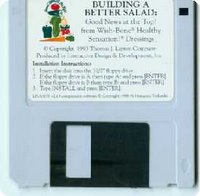Chex Cereal Recipe Books
 There are at least six recipe booklets published by the Ralston Puriana Company from the mid-1970's through the early 1980's. The Checkerboard Kitchens weren't very good about dating their advertising cookbooks during that time period, and only a couple of those listed below have a date.
There are at least six recipe booklets published by the Ralston Puriana Company from the mid-1970's through the early 1980's. The Checkerboard Kitchens weren't very good about dating their advertising cookbooks during that time period, and only a couple of those listed below have a date.The Create-A-Recipe booklet contains winning recipes from a nationwide contest sponsored by Ralston Puriana during the American Bicentennial in 1976. Although the booklet is not dated, it was probably published sometime during 1976 or 1977.
Chex Create-A-Recipe Book, not dated, 24 pages
Chex Cooking the Microwave Way, 1979, 24 pages
Chex The Partymakers, not dated, 24 pages
Chex The Natural Way to Good Cooking, not dated, 25 pages
The Bran Chex Plan for Good Cooking, not dated, 25 pages
Chex Party Mixes, Snacks and Candies, 1980, 16 pages
I'm not a great fan of the pre-packaged Chex Mix snacks. Although they are convenient, I find that you get a much better flavor when you mix up your own. The recipe below is not for a snack mix, but for candy. It's from the Chex Party Mixes, Snacks & Candies booklet.
WESTERN CHEX BRITTLE
1 cup packed brown sugar
1/4 cup light corn syrup
1/2 cup water
1 teaspoon salt
3/4 cup cocktail peanuts
1/4 teaspoon baking soda
2 tablespoons butter or margarine
5 cups Corn Chex cereal
Butter large baking sheet. Set aside. In heavy 4-quart saucepan cook brown sugar, syrup, water and salt to 250 degrees (hard ball) over medium heat. Add nuts. Continue cooking over low heat to 285 degrees (soft crack). Stir constantly. Remove from heat. Mix in soda and butter. Working quickly, stir in Chex to coat all pieces. Spread on baking sheet. Separate into thin layer with two buttered forks. Cool. Break into bite-size pieces.
Makes about 1 pound.





 Meat Grinder/Food Chopper
Meat Grinder/Food Chopper  Drink Mixer
Drink Mixer  Slicer and Shredder
Slicer and Shredder  Butter Churn
Butter Churn  Colander
Colander  Can Opener
Can Opener  Bean Slicer
Bean Slicer  Ice Cream Freezer
Ice Cream Freezer  Coffee Grinder
Coffee Grinder Knife Sharpener
Knife Sharpener  Polisher
Polisher  Pea Sheller
Pea Sheller  Potato Peeler
Potato Peeler 


